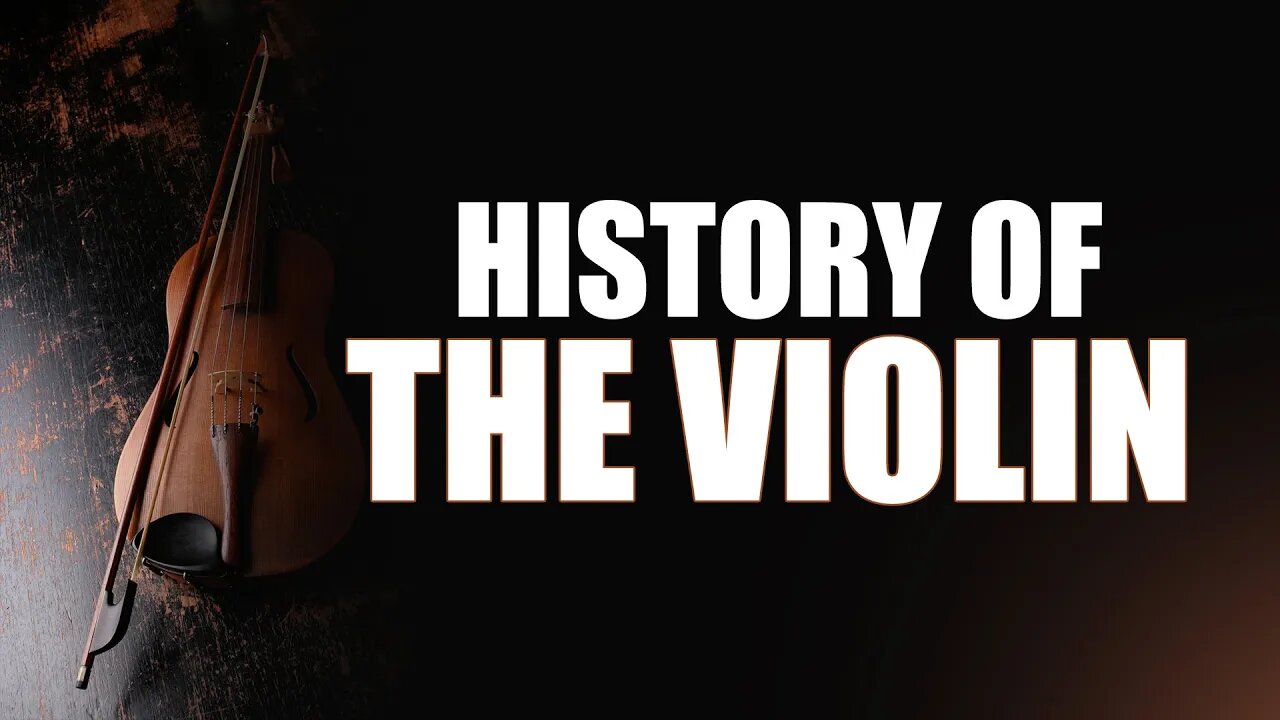Premium Only Content

The Violin's History
The violin, sometimes known as a fiddle.
is a wooden chordophone a string instrument in the violin family.
Most violins have a hollow wooden body, and It is the smallest and thus highest-pitched instrument in the family in regular use.
[a] The violin typically has four strings, some can have five, usually tuned in perfect fifths with notes G3, D4, A4, E5, and is most commonly played by drawing a bow across its strings. It can also be played by plucking the strings with the fingers and, in specialized cases, by striking the strings with the wooden side of the bow .
Violins are important instruments in a wide variety of musical genres.
The birth of the violin
The eastern ancestors of the violin
Instruments like the violin that use a bow to produce a sound are called bowed stringed instruments. The Arabian rabab and the rebec, which came from the orient in the middle ages and was played widely in Spain and France in the fifteenth century, are said to be the ancestors of the violin. Near the end of the middle ages, a bowed stringed instrument called a fiddle appeared in Europe.
In the East, the Chinese erhu and morin khur evolved from the rabab, and so they are relatives of the violin.
Who made the first violin?
Compared to its ancestors, the violin is in a class by itself in terms of completeness. In addition, it was not improved gradually over time, but appeared in its current form suddenly around 1550. Yet, none of these early violins exist today. This history of the violin is inferred from paintings from this era that feature violins.
The two earliest violin makers in recorded history are both from northern Italy: Andre Amati from Cremona and Gasparo di Bertolotti from Salon (Gasparo di Salon). With these two violin makers, the history of the violin emerges from the fog of legend to hard fact. Violins produced by these two still exist today. In fact, the oldest violin in existence today is one built by Andre Amati around 1565.
The viol, a relative of the violin?
Though the violin was introduced to the world in the middle of the sixteenth century, there was a similar looking instrument made in about the fourteenth century called the viol.The viol thrived in the sixteenth and seventeenth centuries, and the violin and the viol actually coexisted in the Baroque period.
Instruments in the viol family did not have the f-shaped sound hole of the violin but rather a C-shaped sound hole or even some more decorative shape. The viol differs from the violin in that it has six, seven, or more strings tuned in fourths (compared with the four strings of the violin tuned in fifths), a fretted fingerboard, and a relatively thick body because of the sloping shoulder shape at the joint where the neck meets the body. There are various sizes, but the Viola da Gamba, which has a lower register similar to that of the cello, was particularly famous.
See Also
1- Fur Elise (For Elise) by Beethoven: https://youtu.be/OkhfDyqOcP4
2- Beethoven's 9th Symphony - Classical music - Inspirational Music: https://youtu.be/pmvdQ_U7L68
3- 360°Beethoven 5th symphony Rotterdam Philharmonic Orchestra Virtual Reality concert 3d sound 1080p: https://youtu.be/6kAJ3yiDXKo
Please Subscribe to our Channel: https://youtube.com/c/AKStudio0
We wish you a peaceful life :)
#youtube #youtuber #instagram #music #love #spotify #tiktok #follow #like #explorepage #youtubers #youtubechannel #video #instagood #memes #subscribe #viral #rap #facebook #explore #ps #art #soundcloud #k #artist #newmusic
-
 2:17:31
2:17:31
Robert Gouveia
8 hours agoJudge BLOCKS Proof-of-Citizenship! Trump BACK to Supreme Court! Deportee Discovery STAYED!
74.2K34 -
 7:04:37
7:04:37
MyronGainesX
23 hours ago $19.00 earnedCollege Debate Reaction, Jordan Peterson Sells Out, Shannon Sharpe Shakedown!
109K35 -
 2:01:49
2:01:49
Joker Effect
5 hours agoWE ARE IN THE WILDWEST! Frontier Legends is crazy!
24.2K -
 3:54:43
3:54:43
FrizzleMcDizzle
6 hours agoELDEN RING and I'm officially a creator on RUMBLE
31.1K1 -
 1:33:35
1:33:35
theoriginalmarkz
8 hours agoEvening News with MarkZ, joined by Jonathan Otto. 04/24/2025
80.1K6 -
 8:02:49
8:02:49
Lilpaul112
8 hours agoSolos On the Island / Repo Time With the Brrrap Pack Gang!
24.9K1 -
 3:56:48
3:56:48
GrimmHollywood
8 hours ago🔴LIVE • GRIMM HOLLYWOOD • REPO with the BRRRAP PACK • THEIR FIRST TIME PLAYING •
24.8K -
 4:37:00
4:37:00
Game On!
17 hours ago $2.45 earned2025 NFL Draft Live Coverage and Reaction!
40.3K -
 3:30:04
3:30:04
RamrodJenkins
8 hours agoOblivion Remastered! I am so excited to finally play this!
16.2K5 -

Tommy's Podcast
7 hours agoE713: Lady Luck
29.3K1